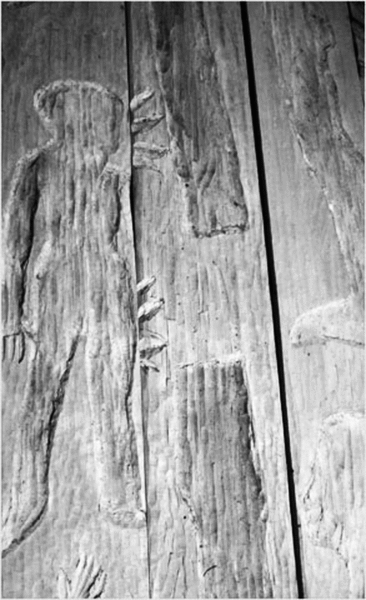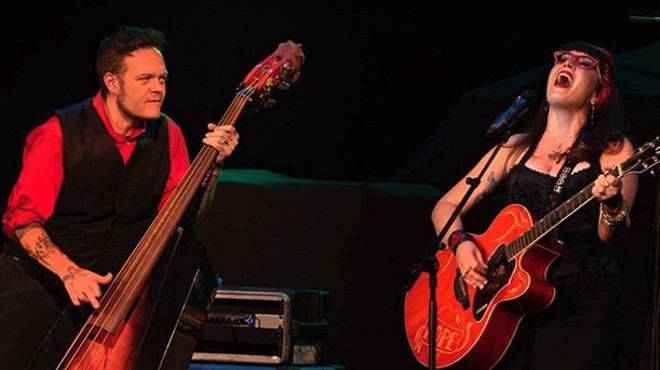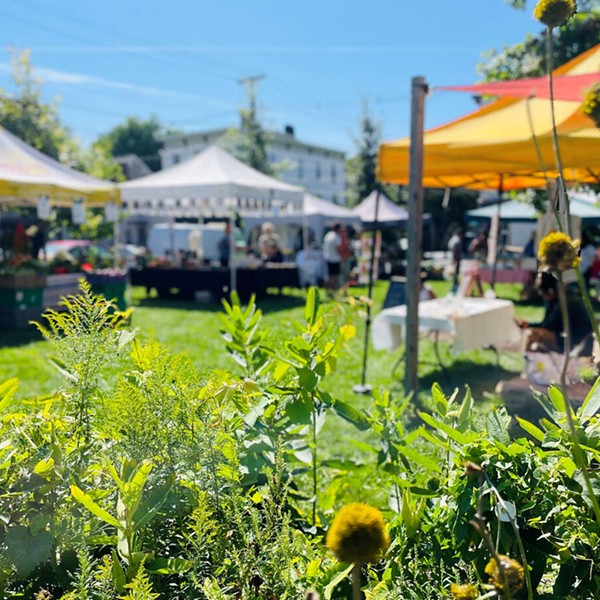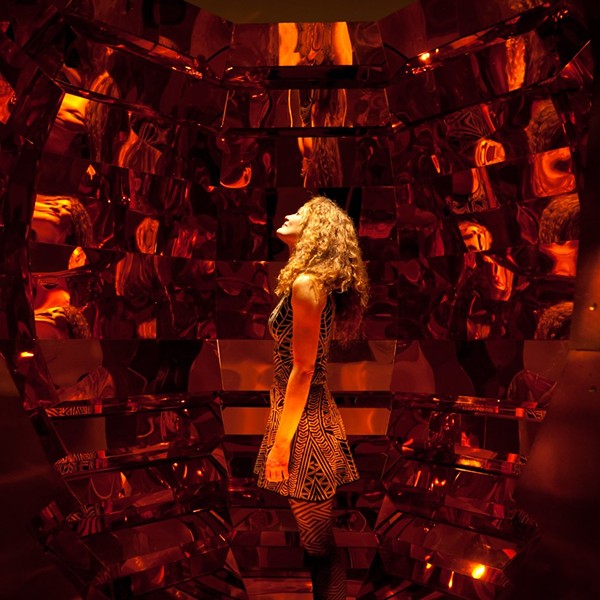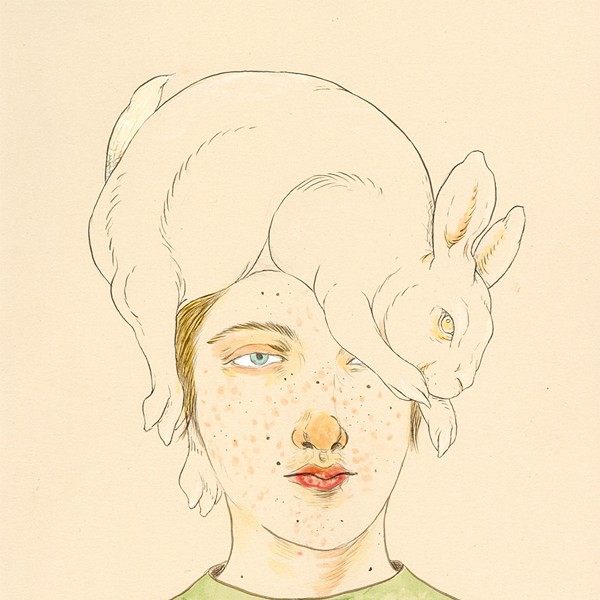Art can beckon us on many different journeys—go to a museum like the Met, and you’re time traveling, pack up (as I’m doing now) and run off to Europe to see the big art shows and you’re frequent-flyer traveling, or just encounter an interesting work, wherever it is, and let your mind do the walking.
I recently did a fair bit of driving in search of a connection between two outdoor summer sculpture shows in the area, only to find that the distance between them could not have been greater. “Bivouac,” on view at The Fields at Omi International Arts Center, takes a witty, somewhat arch approach to art, inventiveness, and imagined survivalism in the Columbia County outback, while “Paths: Real and Imagined,” at the Byrdcliffe Arts Colony in Woodstock, gravitates toward an archetypal/metaphorical reading of its stated theme.
Space travel—or at least a 1950s sci-fi vision of crash landing and attempting to survive on a distant planet—seems to be one of the leading concepts in “Bivouac,” curated by Max Goldfarb at Art Omi. (The most literal contribution in this respect is Kahn/Selesnick’s Apollo Lunar Rover Crash, crumpled bits of metal trailing from a shredded red re-entry parachute hanging overhead from a tree.) One of the meadows in The Fields’ bucolic rural landscape is now littered with an array of variously assembled junk, salvaged and ingeniously reused bits of wood, metal, and plastic that form improvised shelters and other survivalist responses to the environment.
Near the entrance to the field, Mary Mattingly’s Mach II presents a disarmingly mangled vehicle that appears to have spent itself reaching the speed of its title, now cobbled together with a bleached animal skull at its prow and a plastic bubble containing an impenetrable tangle of gauges, wires, and odd bits of things. Such bricolage has become a discernable trend in the art world in recent years, tracing its lineage back to the work of Judy Pfaff. In this case, Mattingly plays on the welter of independent references evoked by her materials to build an almost Mad Max-like dystopian narrative in the piece—a theme picked up throughout the exhibition.
Michael Cataldi’s Prop ingeniously devises an impromptu shelter by raising what appears to be a broad pup tent of sod (actually supported by a panel of steel wire mesh), using a simple stick to hold open an aperture in the earth. One of the stronger works in the exhibition, he manages to move beyond the intellectually hip take on lost utopias that tends to mark some of the show’s other contributors, drawing power quite literally from a primordial engagement with the Earth itself.
The downside of “Bivouac” for me is what might be the chief selling point for others—a strong sense of city cynicism (and that intellectually hip attitude) that marks much of this show, as an exercise in primarily conceptual engagement, an abstracted idea of what isolation in “the country” might actually mean. Matthew Lusk’s series of suspended tent structures, parked arbitrarily in the center of the field, are described by curator Max Goldfarb as “minimalist sculptural constructions catalyzing surprising conceptual synapses.” I’m not sure exactly what that means—nor do I think I’m supposed to. Such etiolated conceptualism simply raises the white flag for the artist to have anything meaningful to communicate. Perhaps it’s symptomatic of the larger cultural malaise we’ve gotten ourselves into, but I’m still looking for something deeper, more resonant.
Both geographically and conceptually, Byrdcliffe’s “Paths: Real and Imagined” could hardly be farther away from the intellectualism of “Bivouac.” Curator Nancy Azara invited 29 mostly regionally-based artists to engage the concept of the path—a symbolically freighted idea, to say the least—as understood in any of its various dimensions or connotations. Given the many dirt roads, wooded pathways and trails that honeycomb the Byrdcliffe colony, it comes as a bit of a disappointment that almost the entire show can be seen in a drive-by along Upper Byrdcliffe Road. Any number of previous Byrdcliffe summer shows have made better use of the property, and, given the organizing principle of this exhibition, it’s a real opportunity lost. What better way to respond to the idea of finding/following a path than to invite the viewer to literally engage in one, especially in such a naturally and historically rich environment?
As a result, the paths named in the title are primarily imagined, many of them along the lines of archetypal imagery a la Joseph Campbell and C.G. Jung. From Azara’s own totemic, carved wood Time/Path, to the gilded, snaky forms of Roman Hrab’s Endless Squiggle Elements, references to collective-unconscious imagery abounds.
The most successful works in the show, however, move beyond simply summoning archetypes, and insinuate themselves more deeply into the landscape (whether real or imagined). Stella Chasteen’s Still Water, Woods sets beautifully iridescent, flat ceramic plates into a shallow, meandering drainage culvert just in front of the Villetta, pointing out the path of the water, and heightening the viewer’s perception of color, light, and the idea of water in the process.
The showstopper, however, is Gillian Jagger’s Deer Path (The Other Ones). Strung from a rafter in the Old Kiln Shed, a series of chains is held taught by a spike driven into the ground just outside the shed’s large opening. Suspended along the chains is a cascading series of hollow, cast deer bodies—obviously carcasses, like those you’d see lashed to the front of a truck during deer season. The piece is so powerful largely because Jagger breaks through what can often become the feel-good, New Age-y “Circle of Life” deployment of Jungian archetype to confront us with what those deep ideas of life and death really mean. It’s a place where purely intellectual engagements with survival or with symbolic meaning, or whatever, open onto the possibility of an encounter with the real.
Now that sounds like the start of a genuine journey.
“Bivouac,” a group exhibition, is on view through the fall at The Fields Sculpture Park at Art Omi International Art Center in Ghent.
(518) 392-2181; www.artomi.org.
“Paths: Real and Imagined,” the 2007 Byrdcliffe Outdoor Sculpture Exhibition, is on view through October 8 at the Byrdcliffe Colony in Woodstock. (845) 679-2079; www.woodstockguild.org.







